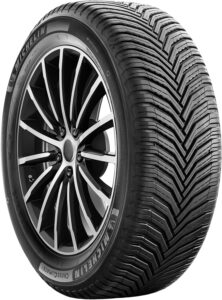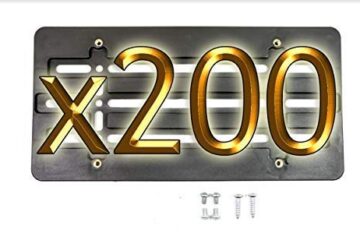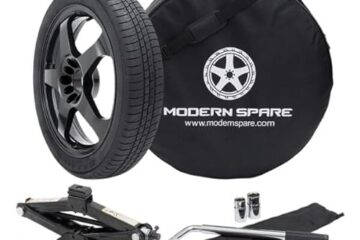Continental Crosscontact Lx25 Vs Michelin Crossclimate 2
Continental crosscontact lx25 and michelin crossclimate 2 are both excellent tires for all-season performance. Selecting the right tire for your vehicle can improve its overall performance, handling, and safety.
The two popular tire brands in the all-season category are continental crosscontact lx25 and michelin crossclimate 2. The continental crosscontact lx25 provides exceptional wet traction, a comfortable ride, and long-lasting tread life. On the other hand, michelin crossclimate 2 is ideal for drivers who need all-season performance, no matter the weather condition.
| Feature | Continental CrossContact LX25 | Michelin CrossClimate 2 |
|---|---|---|
| Tire Type | All-Season | All-Season |
| Tread Pattern | Symmetrical | Asymmetrical |
| Tread Depth | Varies by size | Varies by size |
| Tread Compound | Silica-Enhanced Compound | Silica Compound |
| Performance | Balanced performance | Balanced performance |
| Winter/Snow Capability | Good | Excellent |
| Wet Weather Performance | Very good | Excellent |
| Dry Weather Performance | Very good | Very good |
| Ice Performance | Moderate | Good (for an all-season) |
| Noise Level | Low | Low |
| Comfort | Comfortable | Comfortable |
| Ride Quality | Smooth | Smooth |
| Longevity | Good | Very good |
| Warranty | Up to 70,000 miles (depends on size) | Up to 60,000 miles |


It delivers superior wet and dry traction, excellent handling, and a quiet ride. This article will take a closer look at continental crosscontact lx25 vs. michelin crossclimate 2 to help you decide which tire is best suited for your driving needs.
Tread Design And Pattern
The continental crosscontact lx25 has a unique pattern with notched shoulders for superior traction. This tire type also has wider grooves, distributing water and providing better wet grip. The michelin crossclimate 2 has wider tread blocks for better contact with the road.
Its v-shaped pattern helps with traction on snow and slushy terrain. When comparing these two designs, it’s clear that they both have their strengths. Tread design and pattern impact tire performance in many ways, including grip, stability, and safety. Choose the tire that best suits your needs based on the driving conditions you may face.
Wet Traction
Wet traction is one of the most important factors when choosing a tire. The continental crosscontact lx25 is evaluated to have excellent wet traction performance. The michelin crossclimate 2’s wet traction performance also received high marks. When comparing the two models, both have strong performance in wet weather conditions.
It’s essential to consider wet traction as it has a significant impact on safety, especially during rainy or slick road conditions. By evaluating wet traction performance, drivers can feel confident and secure on the road.
Dry Traction
When it comes to evaluating the dry traction performance of the continental crosscontact lx25, we can see that this model provides excellent handling abilities. Similarly, the michelin crossclimate 2 also delivers an impressive dry traction performance that significantly raises the vehicle’s handling.
Comparison of the two models’ dry traction performance shows that both are equally adept at providing superior handling and ultimate performance. However, dry traction is of utmost importance, as it helps drivers maneuver the vehicle safely and efficiently. By assessing the dry traction performance of both models, we can see that the continental crosscontact lx25 and the michelin crossclimate 2 both perform exceptionally well in providing superior handling and performance on dry surfaces.
Comfort And Noise
When selecting tires, comfort and noise level are crucial considerations. The continental crosscontact lx25 has a high level of comfort and low noise level. The michelin crossclimate 2 fares equally well in being comfortable and noise-free, making it perfect for long drives.
Comparing the two models, one can observe that the continental tire edges out in terms of noise level, but the michelin has a more comfortable ride. A comfortable ride is essential for long-distance travel, reducing fatigue, and keeping the driver alert.
The michelin tire’s advanced technology ensures its superior performance, making it a popular choice amongst drivers. Choosing the right tire is essential for optimal driving experience, and one must pay attention to the tire’s comfort and noise level.
Price And Value
The prices of the continental crosscontact lx25 and michelin crossclimate 2 vary, and it’s important to assess their value. Durability and performance longevity are key factors that impact tire value over time. Quality and reliability are also important to consider when choosing a tire brand.
The continental crosscontact lx25 offers excellent handling and all-season capabilities, making it a great value for its price. The michelin crossclimate 2 has surpassing wet traction and grip, but it comes at a slightly higher cost. Ultimately, the decision between the two models will depend on your specific driving needs and budget.
Frequently Asked Questions For Continental Crosscontact Lx25 Vs Michelin Crossclimate 2
Which Tire Offers Better Wet Traction?
The michelin crossclimate 2 offers better wet traction due to its v-shaped tread pattern and silica-reinforced compound.
Which Tire Offers Better Performance In Snow?
The continental crosscontact lx25 offers better performance in snow due to its deeper grooves and sipes.
Which Tire Offers Better Fuel Efficiency?
Both tires have similar fuel efficiency ratings, with the continental crosscontact lx25 having a slight edge in some tests.
Conclusion
After comparing the continental crosscontact lx25 and michelin crossclimate 2, it’s clear that both tires have their own unique strengths and weaknesses. The continental tire is ideal for drivers in wet and snowy conditions, thanks to its superior braking and handling capabilities, while the michelin tire is more well-rounded, performing well across a wider range of surface conditions.
Ultimately, the choice between these two tires will come down to personal preference and driving needs. It’s important to consider your typical driving conditions and the type of vehicle you own when choosing between these two premium all-season tires. Whichever you choose, you can be confident that you’re getting a high-quality tire that will provide great performance and durability.
With the right tire, you can feel safe and secure on the road, no matter what conditions you encounter.





0 Comments